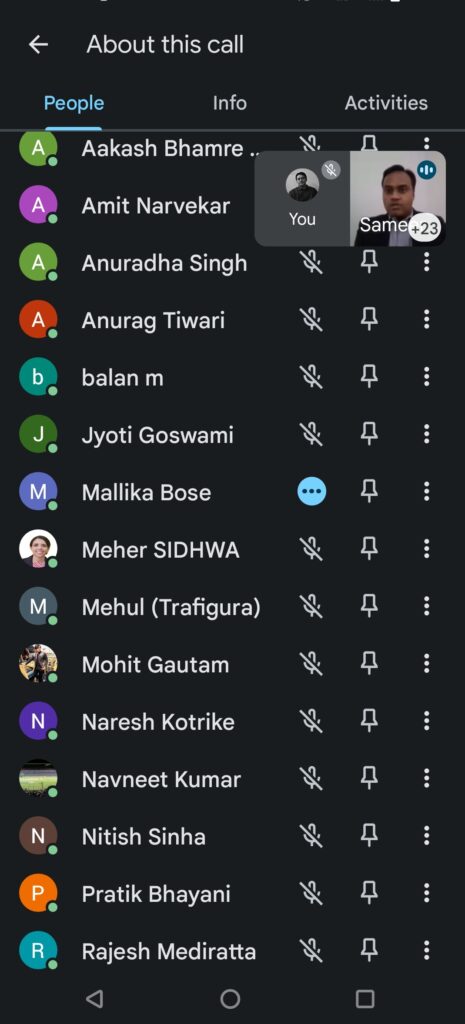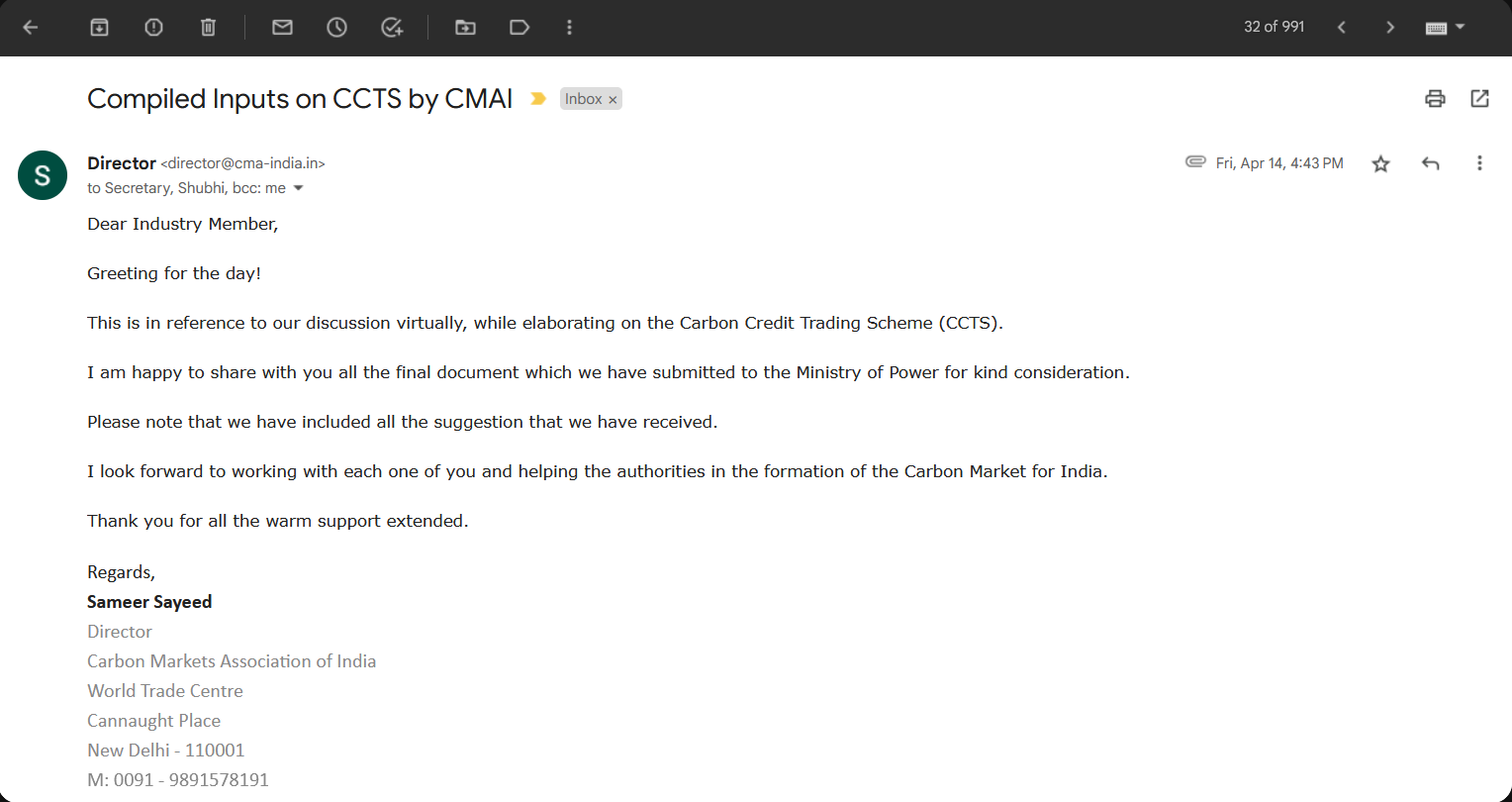
There are moments when the ordinary transforms into the extraordinary, and the routine takes on a whole new meaning. As the Assistant Manager at Kanaka Management Services, back in April of 2023, I had the privilege of participating in a crucial stakeholder meeting organized by the Carbon Market Association of India (CMAI). CMAI had been invited by the Ministry of Power to furnish public comments on the recently released draft bill of the Carbon Credit Trading Scheme as part of the Energy Conservation Act, 2001. Alongside a group of esteemed businesses and organizations invested in the Indian carbon market, we came together to discuss essential considerations that could shape the forthcoming Indian Carbon Market Bill. I found myself on an unexpected journey that led me to actively participate in shaping the future of India’s Carbon Credit Trading Scheme. This journey, spurred by a virtual call organized by the Carbon Market Association of India (CMAI), became a testament to the power of advocacy and collaboration in driving sustainable change. The call, held before the release of India’s carbon bill, was a moment of significance where voices could be raised, ideas shared, and the blueprint of the carbon credit trading framework influenced.
Imagine this: I was on my way back from a client site, enveloped in the usual rhythm of my daily commute, when the virtual meeting began. It was an incredible experience to contribute to such a pivotal event while on the move.
The virtual assembly, a confluence of stakeholders, experts, and regulatory authorities, was more than just a meeting – it was an arena for ideas to converge, recommendations to be shared, and strategies to be discussed. Held before the release of India’s carbon bill, this event held the promise of shaping the contours of the nation’s carbon market landscape.


This dialogue was anything but mundane; it delved into facets that demanded attention to ensure the bill’s efficacy. In this context, I proposed four significant points that were welcomed and amalgamated into a collective letter submitted to the relevant authorities. My suggestions were made keeping in mind other Trading Schemes and the teachings from their respective teething problems:
1. Transparent MRV Process and Data Accessibility
The call for transparency and accessibility in the Measurement, Reporting, and Verification (MRV) process struck a chord. Enabling open access to this process isn’t just about data; it’s about fostering trust. Transparent data processes create an environment where all stakeholders can participate with confidence, ensuring the credibility and integrity of the carbon market.
2. Unified Carbon Emission Target
The idea of integrating a unified carbon target alongside the existing PAT mechanism was ingenious. It’s a move towards a more harmonized approach to emission reduction. By allowing entities to choose between energy efficiency and carbon targets, we encourage a balanced approach that acknowledges the complexity of emission reduction strategies.
3. Annual Target Aligned with NDCs
The proposal to align annual carbon trading targets with India’s Nationally Determined Contributions (NDCs) was a masterstroke. It underscores the importance of synchronizing the carbon market with broader climate goals. This alignment enhances predictability and stability within the system, encouraging sustained engagement from market participants.
4. Deemed Conversion for Liquidity Management
The concept of allowing EScerts/RECs to be traded without immediate conversion until trade clearance showcased a proactive approach to liquidity management. This innovation addresses concerns around liquidity during the initial stages of India’s carbon market, striking a balance between participation encouragement and risk mitigation.
These recommendations, each harbouring the potential to redefine the carbon market’s landscape, were consolidated into a comprehensive feedback letter. This letter, a collaboration of varied perspectives, was submitted to the Ministry of Power, India. It embodied our collective commitment to creating a more sustainable and environmentally-conscious nation.
Fast forward to today, as we reflect on the recently unveiled Indian Carbon Market Bill, it’s apparent that some of the crucial suggestions raised during that discussion have yet to find their place in the legislation. While the journey towards policy change is often complex and multifaceted, it underscores the importance of continuous advocacy, collaboration, and pushing for policies that truly reflect the industry’s needs.

My involvement in this endeavour highlighted the power of collective voices and the significance of persistent engagement. As I’ve always believed, positive change is a journey that requires patience, adaptability, and a commitment to influencing policy for a brighter tomorrow.
Though the bill might now be yesterday’s news, the spirit of advocacy, collaboration, and sustainable transformation remains unwavering. Let’s continue our efforts, even if it means taking small steps, towards a future where our actions today shape the sustainability landscape of tomorrow.
Reflecting on this experience, I am in awe of how a seemingly routine commute became a catalyst for meaningful contribution. It reinforced the idea that extraordinary moments can emerge from ordinary settings, reminding us of the transformative potential within our daily lives.

